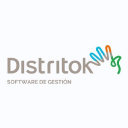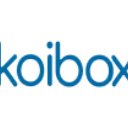How a POS works in the sales management of your business
Let's imagine you have just started your business, which has had a positive response from the public, but the payment methods you offer are still limited. What is POS? A Point of Sale Terminal (POS) can be the solution that allows you to manage your business in the best way and improve your sales.
It is possible that if you still do not accept credit card payments, your customers will continue to patronise you because of the quality of your service, but in the long run this will end up being a nuisance as it will not make it easier for the customer to make a purchase and you will end up losing them.
Old cash registers have not escaped technological advances and the demands of an increasingly competitive market. That is why they are being replaced by faster and simpler solutions.
But how does the implementation of a POS make your sales management easier, what types are there and how do you know which one is the most suitable for you?
In this article we tell you what you need to know about this technology and give you some alternatives that you can consider depending on the type of business you have.
What is POS?
Definition
Point of Sales ( POS) terminals are tools or devices that allow you to manage the sales of your business or shop, since they carry out tasks ranging from collecting payment for the transaction to printing the sales receipt and managing the inventory.
What it is used for
Within the simplification of processes that will allow you to consider the implementation of a POS tool for your business, this decision will also allow you to:
- coordinate and streamline your commercial operations,
- achieve an increase in sales,
- reinforce the security of your business by having less cash available.
How it works
The way this technology works is that for each transaction you intend to carry out, the POS establishes a connection by telephone with the customer's bank, in order to validate the card and the existence of funds. Once this verification has been carried out and the data has been recorded in the system, the sale can be carried out.
For the POS to work, it must have hardware (physical device), software (operating system) and manage the sales process through an interface. Let's see what elements each of these components can include:
- Hardware. Modular or compact POS equipment, which may include:
- CPU,
- display,
- keyboard,
- cash drawer,
- magnetic stripe,
- bar code reader,
- receipt printer.
- Software. Generic or specific management software.
Why use a POS in your business?
One of the main reasons why you should consider getting a POS is the simple fact that it translates into convenience for your customers. This is important not only because the customer will be less likely to abandon a purchase if they encounter barriers in their way, but also because the number of buyers is much more likely to increase due to the ease of payment.
Consequently, there are other benefits for you, your business and your customers, such as:
- increased sales,
- increased payment security,
- time optimisation,
- better cash control,
- personalised tracking of sales,
- simplification of your company's invoicing management,
- reduced risk of theft.
Types of POS
Whatever type of POS you use, it must be integrated and synchronised with the medium through which the operation takes place, whether it is a shop, a website or a mobile device.
Depending on the type of business you have and the way it operates, you have different options: Traditional, mobile or virtual POS. In the first two cases, you can use a dataphone or physical device that allows you to make credit and debit card transactions from any establishment. This can be connected by cable to the fixed telephone line or to the company's ADSL line.
Traditional or physical
Designed for fixed businesses such as food stores, shops of all kinds and retail outlets, this type of POS is the one we are most used to seeing.
Customers make their purchase through a physical channel in the physical shop itself. Simply scan the barcode, register the product and print the receipt to register the purchase.
Mobile or portable
This type of POS is useful when the specificities of your business require you to travel to your customers' premises or home.
In this case, the POS card reader is connected to a smartphone via Bluetooth or a connector, so that the customer can enter their card and, subsequently, their PIN. Once the transaction has been completed, the purchase ticket is sent to the customer via email or text message.
Virtual or online
Used by virtual shops and e-commerce, it is integrated into the business' website database.
Through and thanks to this, the card details are encrypted and are not known to the merchant. In addition, when stock runs out, the website automatically indicates this to the user.
© Arcadina
Hospitality, hairdressing or retail: which type of POS to choose?
We have already seen that there are different types of solutions that you can consider, depending on the type of business you have and its needs. Likewise, depending on the economic sector in which your business operates, you will have more or less options.
We show you three tools that use POS technology to automate your sales.
K District
Distrito K is a company that develops and markets management programmes and solutions for the optimisation of business processes.
Among its solutions, Distrito K offers its SQL POS software, which allows shops to comfortably manage their business.
Services included in this solution:
- Connection with multiple devices (scales, barcode readers, digital signature collection, etc.),
- Integrated touch-screen POS,
- CRM and customer loyalty,
- traceability management,
- business Intelligence,
- treasury management.
© District K

SQL Conta
Koibox
Aimed at the online management of hairdressers and beauty salons, Koibox has a CRM that incorporates multiple marketing tools that contribute to increased sales and customer loyalty.
This management software from Wella offers a simple and attractive interface, which also offers the option to pay only for those modules or services that are required.
Advantages:
- CRM,
- integrated management of business functions,
- waiting list module for cancellation management,
- booking tools,
- marketing tools.
© Koibox

Koibox
Easy POS
TPV Fácil is a point-of-sale application for small and medium-sized businesses in the hospitality, textile and beauty sectors.
This Microsoft Windows application, developed by Querry S.A., can be installed on POS equipment or computers to enable advanced cash register and stock management functions.
Easy POS
Advantages:
- Touch-screen design,
- different types of POS solutions, according to needs,
- free technical support by phone,
- own licence and optional after-sales service,
- certifications: ISO 9001, AENOR.

TPV fácil
Things money can't buy? 👉 POS solution to implement
We have already seen that, in commercial terms, providing your customers with different payment methods so that they can easily and conveniently complete their purchases is vital for your business.
When deciding to incorporate POS technology into the operation of your business, it is important not to lose sight of the additional services offered by the provider, such as technical support, especially in terms of assistance in the event of failures and crashes, and the deadlines for resolving incidents.
Also, better management of retail tasks will depend on which type of solution you choose depending on the type of business you have and not losing sight of the fact that, depending on your sales volume, there will be a transaction fee that will apply.
Article translated from Spanish